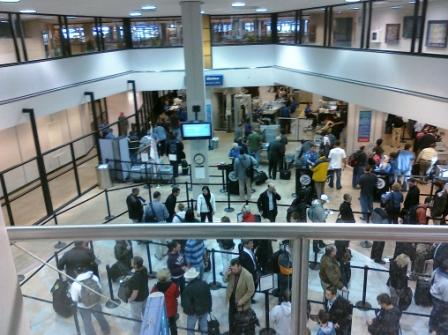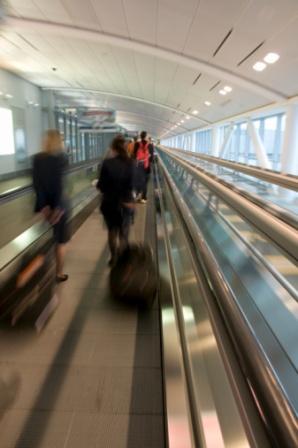

Printable PDF version
Subscribe to our newsletter
Market Soaring … or Stalling
The Greening of Aviation
Terminal Developments
Construction
Management Specialists
111 Pine Street, Suite 1315
San Francisco, CA 94111
(415) 981-9430 (San Francisco office)
6517 Lakeview Drive
Falls Church, VA 22041
(703) 609-7494 (Washington, DC office)
4361 35th Street
San Diego, CA 92104
(619) 550-1187 (San Diego office)
8538 173rd Avenue NE
Redmond, WA 98052
(206) 571-0128 (Seattle office)
www.TBDconsultants.com
For this newsletter we are focusing on the aviation industry, and in this article we draw some comparisons between the way the aviation market and the general market is moving, as we try to learn to fly again and rise out of the Great Recession.
The green movement is reaching out into all fields, and in that regard aviation is no different from the rest. In this article we look at what is being done, and some of the future plans, to make aviation more sustainable.
There are a number of drivers for changes to airport design in general and terminals in particular, including security issues, the sustainability movement, economic issues, an aging population, and technology developments. Very often the changes are driven by a number of these issues.
The events of September 2001 certainly brought security front and center, and we have seen the area needed by the TSA grow and more technology being introduced to scan passengers and carry-on luggage, as well as all checked-in luggage being scanned.
Security has also been an issue in changes to how passengers are dropped off and picked up at airports, with the aim of keeping possible car bombs away from the terminal itself. But that change has also led to functions that traditionally were part of the terminal moving out, such as check-in for passengers and luggage in areas associated with the parking structure.

ACRP (Airport Cooperative Research Program) Report 10 defines three types of ‘out-of-terminal’ passenger processing facilities:
- Adjacent passenger-processing facility (APPF) such as a bag-check plaza in a parking garage, from which the passengers would proceed through the terminal.
- On-airport passenger processing facility (OPPF), being similar to an APPF but from which the passengers would proceed directly to a secure portion of the terminal, possibly by means of a people mover.
- Remote passenger-processing facility (RPPF), being an off-airport facility, possible in a city center, from which the passengers would be transported by a non-secure method of transit, such as a bus, to the terminal.
Apart from the fact that people can often check-in remotely, the check-in area of the terminal has been changing to an automated zone, where each airline has its own check-in kiosks or even the use of a common-use self service (CUSS) system.
At one time, if you were meeting someone from a domestic flight, you could meet them at the gate, or you could see a departing friend or relative off at the gate. Now you cannot get anywhere near the gates if you do not have a boarding pass, and this has led to consolidated meeters and greeters areas in domestic terminals, just as they have traditionally been for international flights. There has also been the introduction of cellphone parking areas, where drivers who are meeting someone can wait until the arriving passenger(s) calls them. Also on the arrivals side you might now find arrivals lounges where you can comfortably wait for your shuttle bus (which these days is likely to be powered by an alternative, more economically friendly, fuel).
Low profile baggage carousel or other devices make it easier for anyone, but particularly for the elderly, to recover their checked bags. So now you have your bags loaded on a cart, but then you find that you have to move up or down to different level in the terminal. Do you dump the cart and carry your bags onto the escalator or wait for an elevator? Now you have another option as we are starting to see banks of high-capacity flow-through elevators that work on a schedule (you do not have to call them) and operate rather like a vertical people mover.
Talking of people movers, there is now an alternative to them, known as high-speed moving walks. There have been a number of attempts at producing high speed moving walks, but the need to accelerate the walk after people get on it and before they exit it has proved problematic. The most successful system to date is the one in Pearson International Airport in Toronto, Canada, on which the walkway and the handrails use a comb-and-slot system that allows them to expand as the walk speeds up at the start, and compress at the end allowing it to slow down so riders can exit easily. The system runs at about 2 km/hr at the start and finish, but running at about 7 km/hr for the majority of the distance.

Design consultant: Katie Levine of Vallance, Inc.